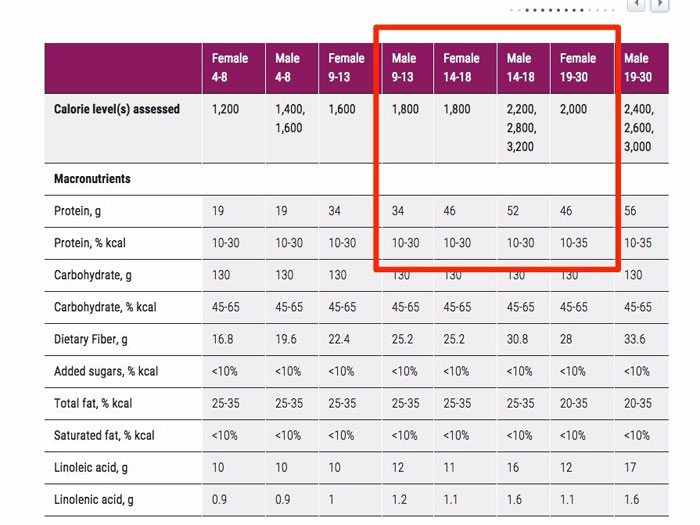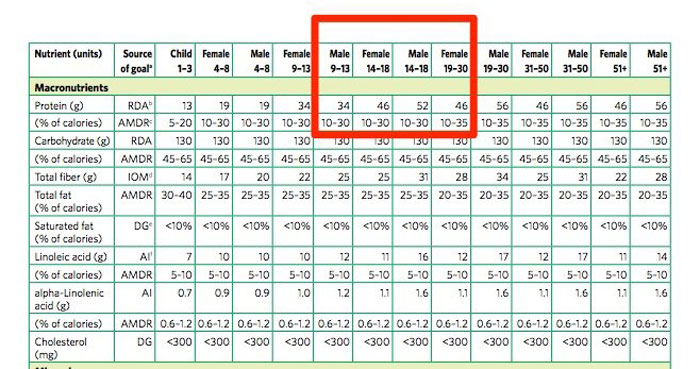The USDA, one of the government organisations responsible for setting up dietary guidelines, just came out with its major five-year report on guidelines for healthy eating.
The guidelines impact what goes into school lunches and government programs that promote healthy diets. The recommendations made some major changes in the way they address protein of all kinds and added sugar. Interestingly, the recommendations specifically advised teen boys and adult men to eat less protein in the form of meat, poultry, and eggs.
In the report, the USDA wrote, "average intakes of meats, poultry, and eggs, a subgroup of the protein foods group, are above recommendations in the Healthy U.S.-Style Eating Pattern for teen boys and adult men".
Protein
However, the new recommendations for actual protein intake are exactly the same as they were in 2010, as you can see in the charts below.
The 2015 guidelines suggest that women aged 19-30 on a 2,000 calorie-per-day diet eat 46 grams of protein a day, while men that same age eat 56 grams of protein. That's identical to the 2010 recommendations.
2015:
 USDA
USDA
2010:
 USDA
USDA
So while the new guidelines place emphasis, on the one hand, on reducing specific sources of protein intake (suggesting that men and boys in particular eat less meat, poultry, and eggs), they also appear to make the exact same specific protein recommendations.
Sugar
As for sugar, the new guidelines limit sugar to only 10 percent of daily calories. Same goes for saturated fat, which is now also limited to 10 percent or less of daily calories.
The guidelines shift the focus more from individual food groups to "healthy eating patterns" to integrate that healthy eating into everyday life.
The new guidelines also remove past restrictions on cholesterol, which was previously limited to 300 milligrams a day.
This article was originally published by Business Insider.
